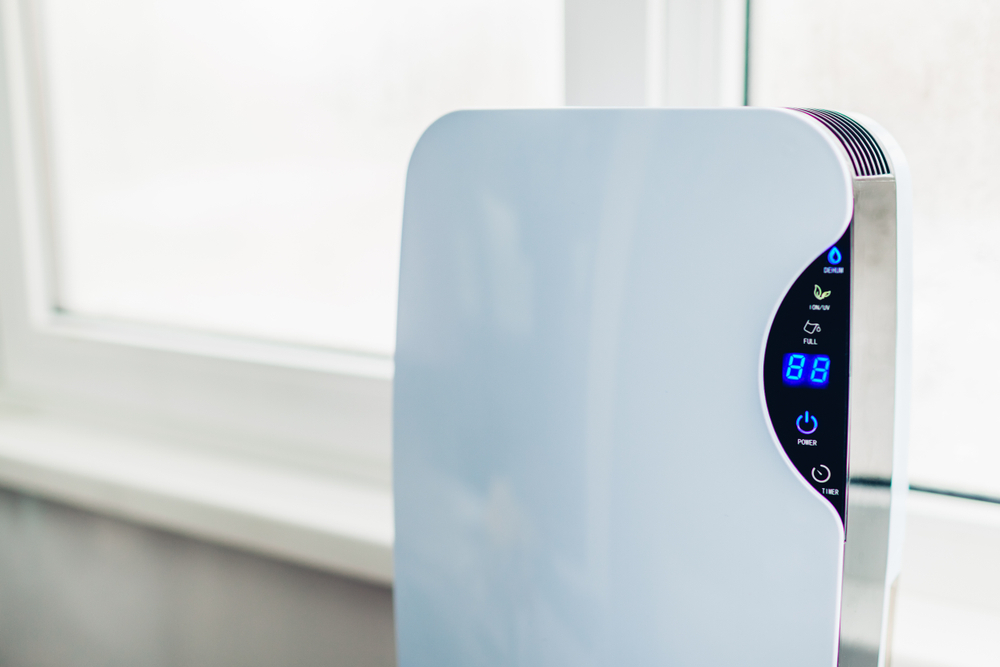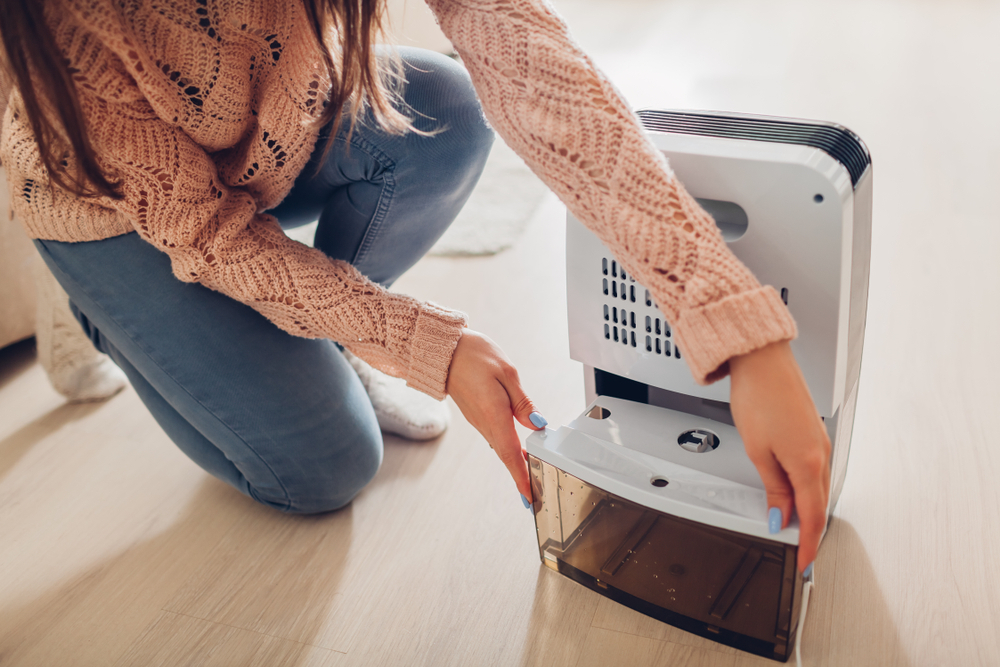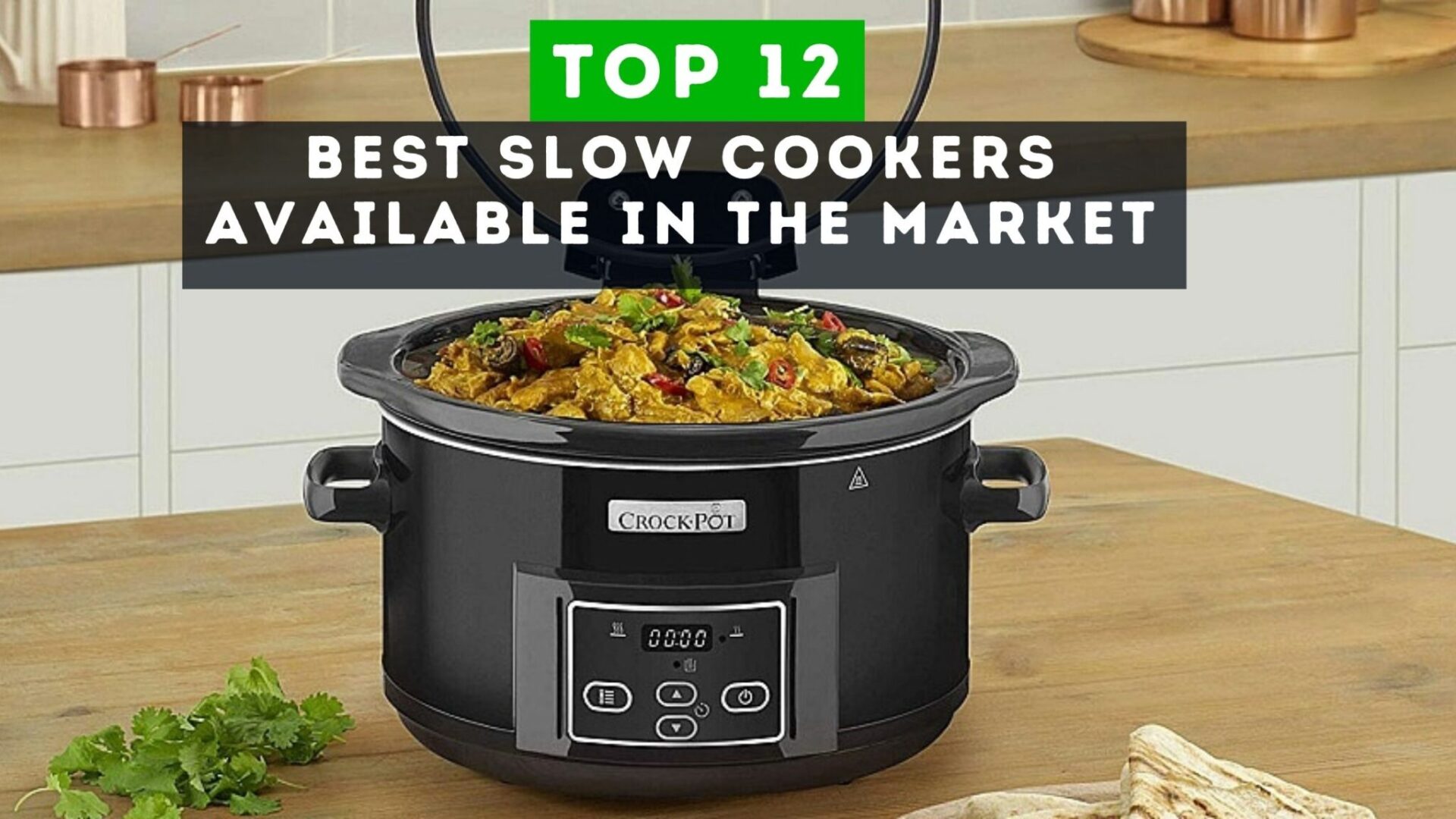Do I Need a Dehumidifier or Not?
Even if you have an air conditioning system in your home, a dehumidifier may be necessary. A dehumidifier will assist reduce musty smells in spaces like basements and laundry rooms where dampness is stronger owing to natural factors or where air conditioning may not reach. In this dehumidifier buying guide, we will answer all of your questions related to dehumidifiers.
A dehumidifier keeps the home’s relative humidity (RH) at a comfortable level. During the summer, an RH of 50% is advised. Even a low RH of 30% is acceptable in the winter, especially if moisture forms on your windows.
High humidity damages electronics, furniture, clothing, and wallpaper, and many areas of your home might become musty and uncomfortable. A dehumidifier can help save your property while also keeping you comfortable.

There are a few indicators that your home needs a dehumidifier. If you observe any of the following in your home or business, it’s time to turn on the dehumidifier:
- On the walls or ceilings, there are moist or mushy areas.
- Water stains are seen as discoloration or dark bands in various patterns.
- The air has a thick, suffocating quality.
- The room has a musty stench that is difficult or impossible to remove.
- On the inside of windows or mirrors, there is condensation.
- Moisture will easily be retained in rooms with porous surfaces, such as textile couches and drapes, wood, cinder block, or rock-coated walls.
Dehumidifier’s Buying Guide
When looking for the best dehumidifier for your needs, there are a few qualities to look for.
Size and Capacity
A dehumidifier’s capacity is the amount of moisture it can extract from the air in one day, and it’s usually measured in pints. If you have a large commercial space, you should search for a dehumidifier with a capacity of 50 to 70 pints. Anything less might not be enough for your needs, and you’ll have to buy additional units or move the unit around all the time to maintain a comfortable humidity level.
Check out the size chart below:

Read Also: 10 Best dehumidifiers for the living room.
Noise Level
A dehumidifier can create a lot of noise, so opt for a machine that runs softly if that’s a concern. Noise from the dehumidifier might be an annoyance, especially if it is located in or near a bedroom. At lower humidity levels, dehumidifiers with two-speed fans run silently. They also save money on energy. It’s a good idea to evaluate the noise level of a dehumidifier before buying it.
Build Quality
Dehumidifiers are made of steel or heavy-duty plastic. However, some manufacturers make savings by using low-quality, lightweight plastic in their dehumidifiers. Don’t be concerned about the higher initial expense of a high-quality build; it will pay off in the long term.
Power Usage
Different dehumidifiers use different amounts of energy to operate, like all other electronic appliances. Dehumidifiers typically use 50 to 800 watts of power. (A normal bulb consumes about 60 watts, while a typical computer consumes roughly 365 watts.) Energy Star certified dehumidifiers use less energy which might have a significant impact on your annual electricity bill. Look for the Energy Factor if you want to make a good comparison, especially between larger dehumidifiers. The higher this value is, the more water is extracted per kilowatt-hour of electricity consumed.
Automatic Drainage
We all lead busy lives, and checking if a water tank is full now and then just doesn’t seem to fit into our schedules. Ensure to seek units with a drain exit, allowing the dehumidifier to run indefinitely without needing to be turned on.
Humidistat
Knowing the exact humidity levels in your business is crucial since it will indicate whether or not the dehumidifier is working. As a result, a built-in humidistat is one of the most crucial components of the best business dehumidifier.
Automatic Shut off
When the tank is full to the maximum limit and needs to be drained, the overflow prevention valve will turn the unit off. This is an important quality to look for in any vehicle. When the bucket is full, some dehumidifiers have indicator lights.
Energy Star-certified dehumidifiers will help you save money on your utility expenses. Dehumidifiers with the government-backed label are assured to use less energy while still performing well.
Low-Temperature Operation
Choose a dehumidifier that can work in colder temperatures. Consider a unit with an automatic defrost feature unless you live in a warm climate all year. When interior temperatures dip below 65 to 60 degrees F, the heat exchange coils of a dehumidifier can frost over. So seek an Energy Star rated device with a temperature range of 45 to 40 degrees.
Although the automatic defrost feature may cost a little extra, it will save you the cost of repairing a device that icy coils have damaged. In the winter, large, empty facilities like warehouses are frequently not heated. Unfortunately, some of the greatest dehumidifiers will cease working at certain levels, so buy energy-efficient versions that can operate at low temperatures.
Warranty
The industry standard is a one-year warranty. Even better, a two-year warranty! Consider the warranty’s scope–does it cover the motor, fan, electrical components, or the refrigeration system? Check to see whether any consumer activities will void the warranty. Warranties are your insurance policy against defects and malfunction, so it’s important to consider them while shopping for a dehumidifier.
Types of Dehumidifiers
Portable Residential Dehumidifiers:
Portable Residential Dehumidifiers are best for single rooms or offices. They are typically easy to use and move as needed. A residential dehumidifier works in a similar way as your refrigerator at home. A metal plate on which moisture from the air condenses is cooled during the refrigeration process. A fan continuously pushes room air through the dehumidifier and over the cool metal plate(s).
When the moisture condenses on the plate and drips into the dehumidifier’s water tank, more and more moisture condenses on the plate and drips into the dehumidifier’s water tank. When the relative humidity in the room/house returns to normal, the unit will go into standby mode until needed.
The performance of refrigerant dehumidifiers is best at normal room temperatures, and it deteriorates drastically as the temperature drops. The buildup of ice on the metal cooling plates is a common cause (coils). This freezing can happen at any temperature below 65 degrees Fahrenheit (18 degrees Celsius). A refrigerant dehumidifier can work successfully at lower temperatures, but it does so at the expense of higher-performing components and additional functionality.
If you anticipate your dehumidifier will be used frequently in a room with a low temperature, this may not be the ideal solution. However, if you’re looking for a dehumidifier to use in your home’s usual living spaces, a refrigerant type would suffice.
Whole-House Dehumidifiers:
People who want dehumidification in all rooms or want to keep dehumidifiers out of the way should choose this option. These dehumidifiers work in tandem with your HVAC system.
This ventilation system is considered the most effective way to eliminate dampness, mold, and condensation from your home. Whole-house dehumidifiers are less expensive to run than even the most cost-effective plug-in dehumidifiers, and they’re so silent you’ll forget they’re there.

These units sit quietly in the loft level, pushing air down into your home through a small grill in the corridor. The regular inflow of fresh air from the loft pushes the old, stale, wet air out through your home’s natural leakage spots, leaving it cleaner, dryer, and condensation-free. Installation usually takes about an hour, and anyone with basic DIY skills can install the unit.
The survival rate of airborne viruses and the creation of bacteria, fungi, and dust mites are reduced by removing excess moisture and maintaining relative humidity below 60%, which helps to reduce the occurrence of respiratory infections and symptoms associated with allergies and asthma.
Commercial Dehumidifiers:
You need a heavy-duty dehumidifier that can handle the toughest chores when it comes to safeguarding your company building or repairing areas affected by water and moisture damage. Warehouses, storage areas, manufacturing plants, office buildings, restaurants, bars, sports facilities, locker rooms, indoor pool and spa environments, maritime habitats, and other areas susceptible to excessive humidity employ industrial dehumidifiers.
These effective dehumidification devices instantly reduce high humidity levels and continue to maintain correct humidity levels, avoiding costly repairs. Furthermore, commercial dehumidifiers are particularly well-suited to water damage restoration duties such as excess water removal, rapid drying, and humidity control.
Commercial dehumidifiers are HVAC equipment that use a compressor-powered condenser and evaporator to condense and remove humidity from interior air. Dehumidifiers with the highest capacity may capture and pump out more than 20 gallons of water every day.
Desiccant Dehumidifiers:
The main advantage of a desiccant dehumidifier type is that it can function at significantly lower temperatures. You might want to consider this model if you’re looking for a dehumidifier for a very cool space, such as a garage or workshop.
A desiccant dehumidifier is not the same as a refrigerant dehumidifier. Desiccant dehumidifiers use a desiccant to absorb water from the air. Desiccant is a material that absorbs water. Anyone who has ever seen a small pack of crystals labeled “silica gel” included with a camera, computer, or other gadgets will be familiar with the term.
How Does It Work? The desiccant in a dehumidifier works as follows:
A wheel made mostly of desiccant spins slowly through the incoming air stream and absorbs moisture. A part of the wheel passes through a stream of heated air throughout the rotation cycle, which “reactivates” the desiccant by removing moisture. This condensed water is collected in the dehumidifier’s tank or automatically emptied through a tube from the back of the device. This type of dehumidifier is often smaller and lighter than refrigerant dehumidifiers.
Desiccant dehumidifiers are by default power-hungry (using 600-800 watts of electricity each hour). The technology is currently uncertain; thus, we have recently decided to discontinue this type of unit sales for the time being. When the technology has been perfected to where the reliability matches refrigerant versions, we anticipate stocking desiccant devices again.
Dehumidifier Usage and Maintenance Guide
Dehumidifiers have a lifespan of 3 to 10 years. Performing recommended maintenance and keeping your equipment in good working order might help it last longer.
Consult your owner’s handbook for setup instructions. Check the internal bucket to ensure the float switch isn’t displaced after properly unpacking the unit and removing all shipping tape while maintaining the bucket in place (refer to the instruction manual).

Set the RH level to the driest (highest) setting feasible when turning on the dehumidifier for the first time to stabilize the room’s humidity. The RH values on most systems range from 30 percent to 90 percent. Set the unit’s automatic humidistat to the desired setting after a few cycles.
Also, keep in mind:
- Allow for unrestricted airflow. Units with top-mounted vents can be flush against a wall. Units with back and side vents require 6 inches of clearance from walls and furniture for circulation.
- Check the air filter regularly to keep it clean. A clogged filter reduces airflow and lowers the unit’s efficiency.
- Cleaning gutters and downspouts and ensuring that dryer vents and exhaust fans are in good operating order can help reduce humidity in your home.
- Connect the dehumidifier to a GFCI (ground fault circuit interrupter) outlet. Never disconnect a plug’s third prong.
- Before cleaning, make sure the unit is unplugged.
- When emptying the container, unplug the machine to avoid an electric shock.
- Air filters should be cleaned and/or replaced as needed.
- Before the storage season begins, the unit must be drained.
- Cleaning your dehumidifier and water reservoir instructions.
- Recommendations for troubleshooting
- Information about how to get warranty servicing.
Frequently Asked Questions
Which model would save the most money in the long run?
Begin by looking for an u0022Energy Staru0022 rated unit. An appliance’s Energy Star rating is an international mark that indicates how energy efficient it is. You should also ensure that the dehumidifier you choose is appropriate for the area you want to cover and the humidity level you want to maintain. An undersized dehumidifier will run more frequently, consuming more energy than one that is correctly proportioned.
Is it true that a dehumidifier will contribute heat to the area in which it is installed?
Yes, a dehumidifier generates heat in its immediate surroundings. The amount of heat produced depends on the size of the unit and the region in which it is used.u003cbru003eu003cbru003eThe higher the temperature at which the unit is functioning, the more effectively it can remove moisture from the air. In smaller spaces, a dehumidifier might potentially boost the ambient temperature by 5 to 8 degrees. A dehumidifier, on the other hand, will shut down if the temperature drops too low.u003cbru003eu003cbru003eIf you’re trying to dehumidify a basement that isn’t heated, this is an important consideration. For further information on the operational parameters of the unit you’re considering, look at the specifications.
What does the capacity of a dehumidifier mean?
Dehumidifiers are evaluated based on how much moisture or humidity they can remove from the air in 24 hours.u003cbru003eA 40-pint dehumidifier, for example, is rated to remove 40 pints of moisture from the air in 24 hours. Remember that even though the dehumidifier is eliminating 40 pints of moisture per day, the unit’s storage tank may only be 25 pints, requiring you to manually empty the reservoir bucket to reach the unit’s full capacity. To avoid this problem, look for a unit with a direct drain option, which allows the machine to continuously evacuate moisture into a nearby drain, eliminating the need to empty the holding tank manually.
Is it true that dehumidifiers make a lot of noise?
Although noise is a highly subjective topic, most dehumidifiers are not as noisy as a window or portable air conditioner.u003cbru003eHowever, because a dehumidifier makes noise while operating, you may want to consider placing it somewhere different from your bedroom or any other place where you want quiet. The average household dehumidifier is rated at roughly 55-60 dB, which is about the same as human speaking.
Whole house unit vs u003cstrongu003eportable residentialu003c/strongu003e unit. Which one is better?
While many models claim to dehumidify huge areas, the true performance is determined by the airflow in the operating environment. The efficiency of a whole-house unit will be substantially reduced if air cannot freely travel from one area to another.u003cbru003eA ceiling fan or smaller portable fans may be required to promote airflow between the rooms and the dehumidifier in these cases. Another alternative is to buy two smaller units and put them on opposing sides of the house.
What is the lowest temperature at which dehumidifiers can function?
Most domestic dehumidifiers can work in temperatures ranging from 41 to 44 degrees Fahrenheit. Desiccant dehumidifiers for industrial use work in subzero temperatures. Because each item is different, make sure you read the specs to determine the working temperature.
What’s the difference between a dehumidifier that has a pump and one that doesn’t?
A dehumidifier with a pump is especially useful since it automatically pumps moisture out through a tube connected to a sink, outside a window, or wherever else. The water can be pumped out vertically because they are automatic.u003cbru003eWhen a dehumidifier doesn’t have a pump, a reservoir fills up with water from the air and must be manually emptied. A dehumidifier with an integrated condensate pump is more expensive. Still, it comes in handy when no one is available to empty the dehumidifier. The water bucket is too heavy to move, or the dehumidifier is located in a difficult-to-reach location such as the attic or crawls space.
What is the purpose of a drain hose?
If your dehumidifier doesn’t have a pump, it may come with a drain line that relies on gravity to empty the water. The drain hose can be connected to the dehumidifier higher up, allowing water to flow down and out into a sink, tub, or outside. It’s vital to remember that, unlike a dehumidifier with a built-in pump, because the water removal relies on gravity, it can only flow downwards, not upwards.
Wrapping Up
Allergens, mold, and mildew thrive in moist environments. Dehumidifiers remove moisture from the air, keeping you healthy and comfortable while also safeguarding your home from mold and other harmful organisms. A dehumidifier should be used if the air seems muggy or if condensation forms on the insides of your windows.
Choose the largest dehumidifier you can afford when shopping for one. Smaller machines may be able to handle the work depending on the size of the space. Larger models, on the other hand, are speedier, more efficient, and more dependable.
Determine how you’ll deal with the water that has been extracted from the air. You can connect a hose to a continuous or direct drain dehumidifier and let gravity move the water toward a drain. If you want to use a drain above your dehumidifier, look for a model with a built-in pump. Alternatively, you can empty the collection tank manually when it fills.
- 10 Best Dehumidifiers in 2022 (Buying Guide) - August 2, 2022
- When Should I Switch Off My Dehumidifier? - October 16, 2021
- 8 Best Commercial Dehumidifiers in 2022 (Buying Guide) - October 5, 2021














